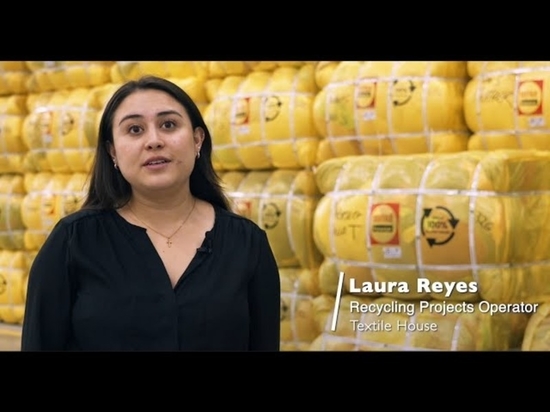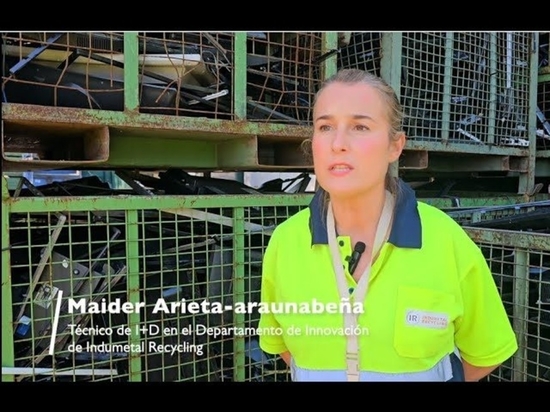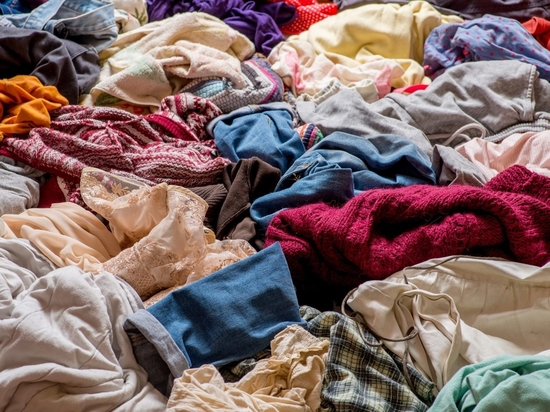
#Industry News
THE MANAGEMENT OF POST-INDUSTRIAL WASTE IN THE TEXTILE INDUSTRY IS MOVING TOWARDS A CIRCULAR ECONOMY
THE MANAGEMENT OF POST-INDUSTRIAL WASTE IN THE TEXTILE INDUSTRY IS MOVING TOWARDS A CIRCULAR ECONOMY
THE MANAGEMENT OF POST-INDUSTRIAL WASTE IN THE TEXTILE INDUSTRY IS MOVING TOWARDS A CIRCULAR ECONOMY
The management of textile waste has experienced a notable transformation in recent decades. Traditionally, the standard protocol for dealing with post-industrial waste was incineration, a practice that has caused significant environmental damage.
However, the rise of ecological awareness and government regulations in various countries have led to the prohibition of incineration and have promoted the adoption of advanced techniques for selection, recycling, and valorization of these wastes.
WHY IS IT IMPORTANT TO RECYCLE POST-INDUSTRIAL WASTE?
According to Earth.org, the textile industry is responsible for approximately 10% of all carbon emissions, and 85% of all textiles produced end up in landfills each year.
These statistics emphasize the critical need to recycle and reuse textile materials to reduce our carbon footprint on the planet.
INDIA: A LEADING ACTOR IN THE GLOBAL POST-INDUSTRIAL WASTE LANDSCAPE
To fully understand the importance of post-industrial waste and its management, it is essential to observe the global landscape.
If we examine the evolution in India, which has emerged as a giant in the textile world, we can comprehend the magnitude of the challenge.
India as a Textile Powerhouse: India is not only one of the most populous countries in the world but also the second-largest producer and exporter of textiles and garments. The enormity of this production has a direct implication: it generates a significant amount of post-industrial waste.
White Gold – Cotton: One of India’s main products is cotton. Being the largest producer of cotton in the world, it is implicit that it also generates a substantial amount of cotton-related waste. Globally, 27 million tons of cotton lint are produced annually (a figure anticipated to approach 30 million tons by 2030). Of this, over 11.5 million tons are converted into textile waste during the pre and post-industrial processes involved in manufacturing cotton garments in factories, according to data and estimates from the OECD and the Food and Agriculture Organization of the United Nations in 2021.
These wastes, if not properly managed, can have devastating consequences for the environment. For efficient management of such a complex challenge, technologies like ECOCLIP by PICVISA make it possible for these wastes to be recycled and reused, becoming a valuable raw material for new textiles.
Government Schemes: The Indian government, aware of the value and contribution of the textile sector to the economy, has launched initiatives like the “Scheme for Integrated Textile Parks (SITP)”. These parks have the potential to adopt and expand recycling and sustainability technologies, serving as models for other countries.
Bright Future, but with Responsibility: Projections suggest that India’s textiles and apparel market will reach impressive figures in the coming years. However, with such pronounced growth, comes the responsibility to ensure that this growth is sustainable. In this context, the adoption of recycling solutions and proper waste management become priorities.
Labor and Sustainability: With a strong and growing labor base in the textile sector, India has unquestionable potential to introduce and expand sustainable and recycling initiatives.
BANGLADESH: GOVERNMENT COMMITMENT TO CIRCULAR ECONOMY
Bangladesh, one of the largest textile producers in the world along with India, has also demonstrated a deep commitment to sustainability and the circular economy.
The government of Bangladesh has recognized that “Circularity is our future.” Aware of its position in the global industry and the crucial role of sustainability, Bangladesh is actively implementing policies to promote the circular economy in the textile industry, as mentioned in Textile Focus.
PAKISTAN: CHALLENGING THE TEXTILE LANDSCAPE WITH OPPORTUNITIES AND CHALLENGES
Pakistan also emerges as a fundamental power in the global textile landscape. Despite its challenges, such as fluctuations in the economy and political dynamics, Pakistan’s textile industry has proven to be resilient and ambitious.
With a rich history in the production of cotton and quality textiles, the country seeks to overcome obstacles and capitalize on its strengths to firmly establish itself in the global market.
Just like India and Bangladesh, Pakistan is also driven by the imperative to adapt to more sustainable and circular practices in response to global demands and environmental pressures.
ENVIRONMENTAL IMPACT OF POST-INDUSTRIAL TEXTILE WASTE
It is worth noting that the problem of managing and valorizing post-industrial waste, mainly in the textile sector, is not a geographically localized challenge. It is a global need and challenge.
Fast fashion, a global phenomenon, has led to the massive production of clothing, and with it, the generation of textile waste has increased exponentially.
Clothing that is discarded and not recycled piles up in landfills around the world, with microfibers escaping during washing and potentially contaminating our oceans (something that is already happening). This situation has led the industry to seek more sustainable and circular solutions.
According to a recent report, the fashion industry has the potential to achieve an astonishing 80% circularity by 2030.
This means that a large percentage of consumed fashion would be reused, recycled, or composted, drastically reducing the industry’s environmental impact.
BRANDS AND SOLUTIONS: ADOPTION OF RECYCLED POST-INDUSTRIAL WASTE
The rise of sustainable fashion drives leading companies to increasingly incorporate recycled post-industrial waste into their manufacturing processes.
Brands like Recover, Renewcell, and Infinity Fiber have taken the initiative to use recycled materials in their products, demonstrating the real possibilities of consolidating a true circular economy in fashion.
ECOCLIP BY PICVISA: A TECHNOLOGICAL REVOLUTION FOR POST-INDUSTRIAL TEXTILE WASTE
In this context, ECOCLIP technology by PICVISA is a cutting-edge and efficient solution.
Using artificial vision, ECOCLIP contributes to optimizing the recycling process of post-industrial textile waste, a contribution that has special relevance and impact in dominant textile nations like India, Pakistan, and Bangladesh.
It is essential that more brands and manufacturers adopt the latest technologies to achieve the sustainability goals set by the industry. At PICVISA, this is our challenge and our greatest commitment.
The textile industry is at a turning point. The adoption of sustainable practices is not just a necessity; it is a cross-cutting and global responsibility. With governments and companies working together towards a greener future, it is possible to transform the textile industry into a benchmark for sustainability and circular economy.




